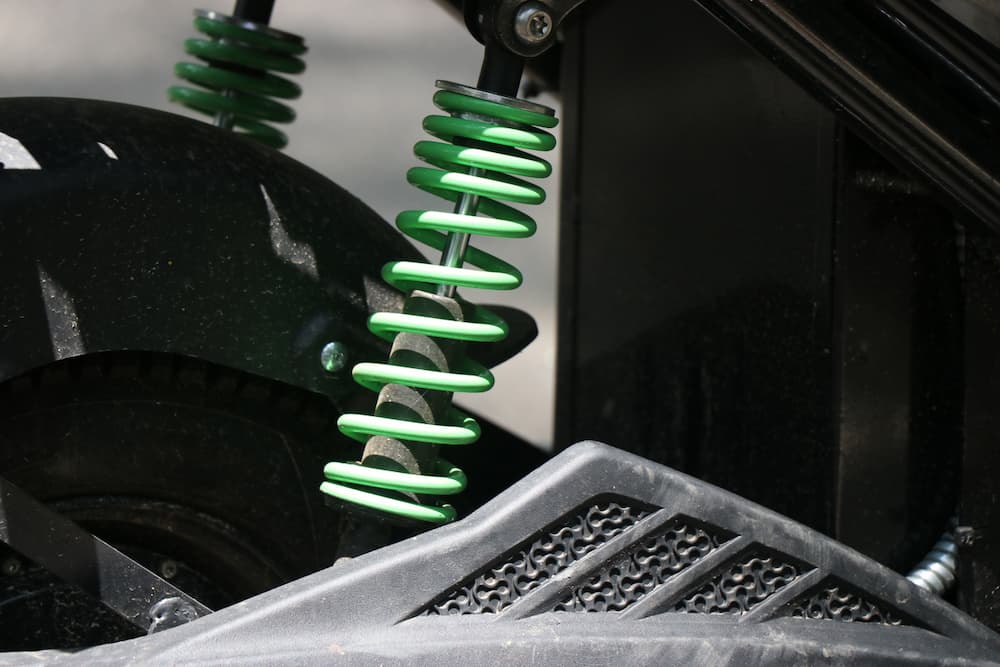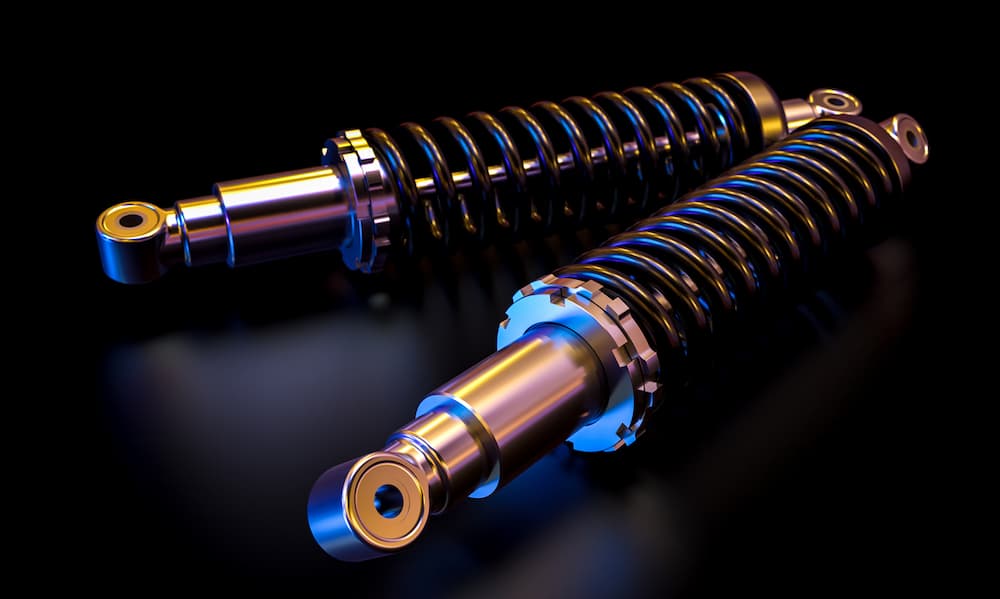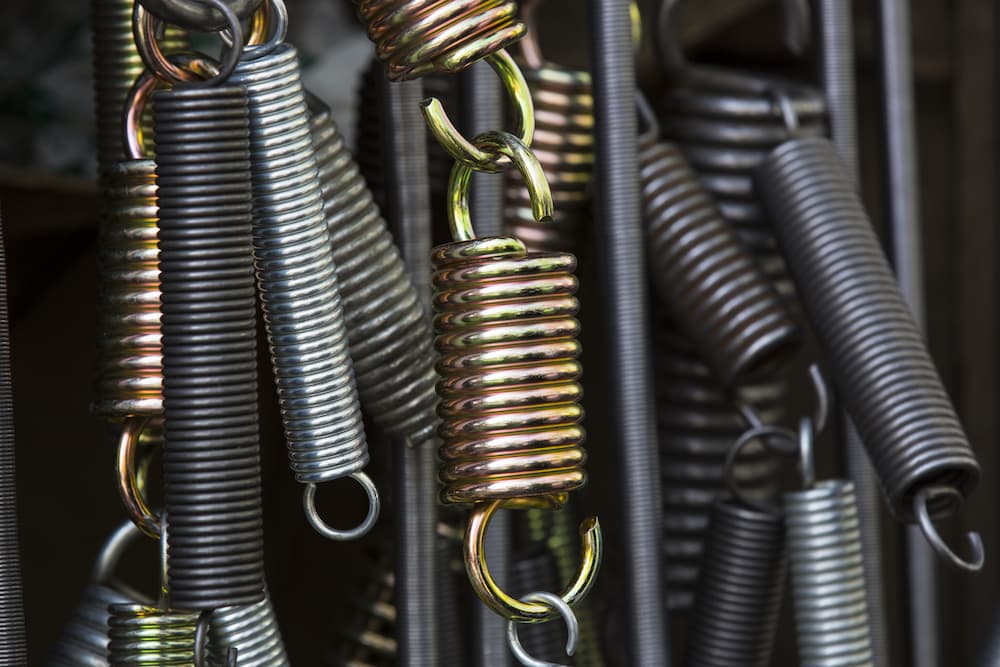Successful machine and product design hinges on selecting the right components for your application. There are many spring designs available, each fulfilling specific roles. However, even similar spring designs can serve unique purposes when their material, finish, and spring rate are carefully chosen. For instance, variable and linear rate springs are utilised in very different ways.
Read on to explore the differences between variable and linear rate springs and why machine and product designers choose one over the other.

What Are Linear Springs?
Linear springs are the ones that people are the most familiar with, as they have a uniform diameter and even spacing between their coils. The term linear relates to the spring rate. Linear rate (or constant rate) springs are based on Hooke’s Law, which states that these designs have a linear (or constant) relationship between load and deflection.
Spring Types Commonly Designed with Linear Rates
Here are two examples of spring designs that are commonly designed with linear rates in mind due to their ability to provide consistent and predictable force over their range of motion.
Extension springs, on the other hand, are designed to extend under load and return to their original length when the load is removed, providing reliable tension in applications such as automotive interiors and garage doors.
Torsion springs are designed to twist under load and return to their original position when the load is removed, ensuring consistent performance in devices like mouse traps and door hinges. These springs are preferred for their simple design, offering dependable performance every time a steady force is needed.
What Are Variable Springs?
Variable or progressive rate springs have uneven spaces between their coils; they lack the uniformity that linear rate springs are known for. As a result, variable-rate springs will have a different deflection rate along their length, which increases as the spring is compressed further.
A compression spring manufacturer can provide a spring with superior adaptability. Still, it does come with the disadvantage that you will need a longer spring to have the same deflection as a linear rate spring.
Progressive rates are popular for vehicle suspensions as they will stiffen quickly. For example, the adaptable nature of the rate lets these suspension springs readily absorb the varying amounts of force from an uneven road. The varied applications progressive springs are needed for have created two subcategories of progressive rates.
Examples of Progressive Rate Spring Designs
Variable rate springs are often designed as barrel springs and conical springs due to their ability to provide progressive resistance and adaptability under different loads. Here are two examples of designs that are often chosen for progressive rates.
Barrel springs are tapered coil springs that deliver a progressive rate response through their barrel-shaped design, allowing for a softer initial compression that becomes firmer as the load increases. This feature makes them ideal for applications requiring a balanced response to varying forces.
Conical springs are cone-shaped and designed to compress progressively, offering increasing resistance as they are compressed. This characteristic provides a versatile solution for applications where a gradual increase in force is needed, enhancing performance in dynamic load conditions. Both designs are favoured for their ability to adapt to changing forces, making them valuable in applications with varying load requirements.

Other Rates for Springs
With the wide variety of applications that need reliable spring rates, the industry could not be limited to just linear or progressive. Here are two other types of spring rates used to create various products or machine applications.
Constantly Increasing Spring Rates
A constantly increasing rate is used chiefly in load-compensating applications. These have been chosen for the rear of vehicles to compensate for a load area, such as the back of a pickup truck. For example, stock replacement suspension springs are designed at a constantly increasing rate. These springs would not be used as main suspension springs but supplemental springs.
Dual Spring Rates
Dual-rate springs have two linear rates connected with a rate transition range. This spring design is far more specific to road vehicles and would be rare in other applications. Coils will identify dual-rate springs wound closely together but increasing in separation along the length of the spring.
Because of their dual nature, their rates will be labelled differently. For example, a dual-rate spring may be labelled 200/425lb/in. To elaborate, this would state that the spring has a starting rate of 200lb/in through some deflection range. Then, the rate would transition to 425lb/in through a deflection range of 1’’-1.5’’. Increased roll control is provided with these springs compared to constantly increasing or linear rates, and they are popular for high-speed, off-road racing.

Spring Rate Designs
Despite the different results of spring rates, the only visual difference between linear and progressive rates is coil separation, meaning the design of both spring rates can be applied to almost all spring designs effectively. Unevenly spaced coils signify a progressive spring, and evenly spaced coils will be part of a linear spring.
UK Custom Spring Manufacturing at Airedale Springs
Spring rates are an essential characteristic that can be applied to any spring design and size. Spring manufacturers will use various methods, materials and treatments to imbue your chosen spring designs with the required spring rate.
Choosing which spring rate is best for your application is vital to getting the most out of your components. We are a custom spring manufacturer with decades of experience supplying high-quality springs to various companies across different industries; get in touch for reliable support for your spring design and manufacturing needs.


